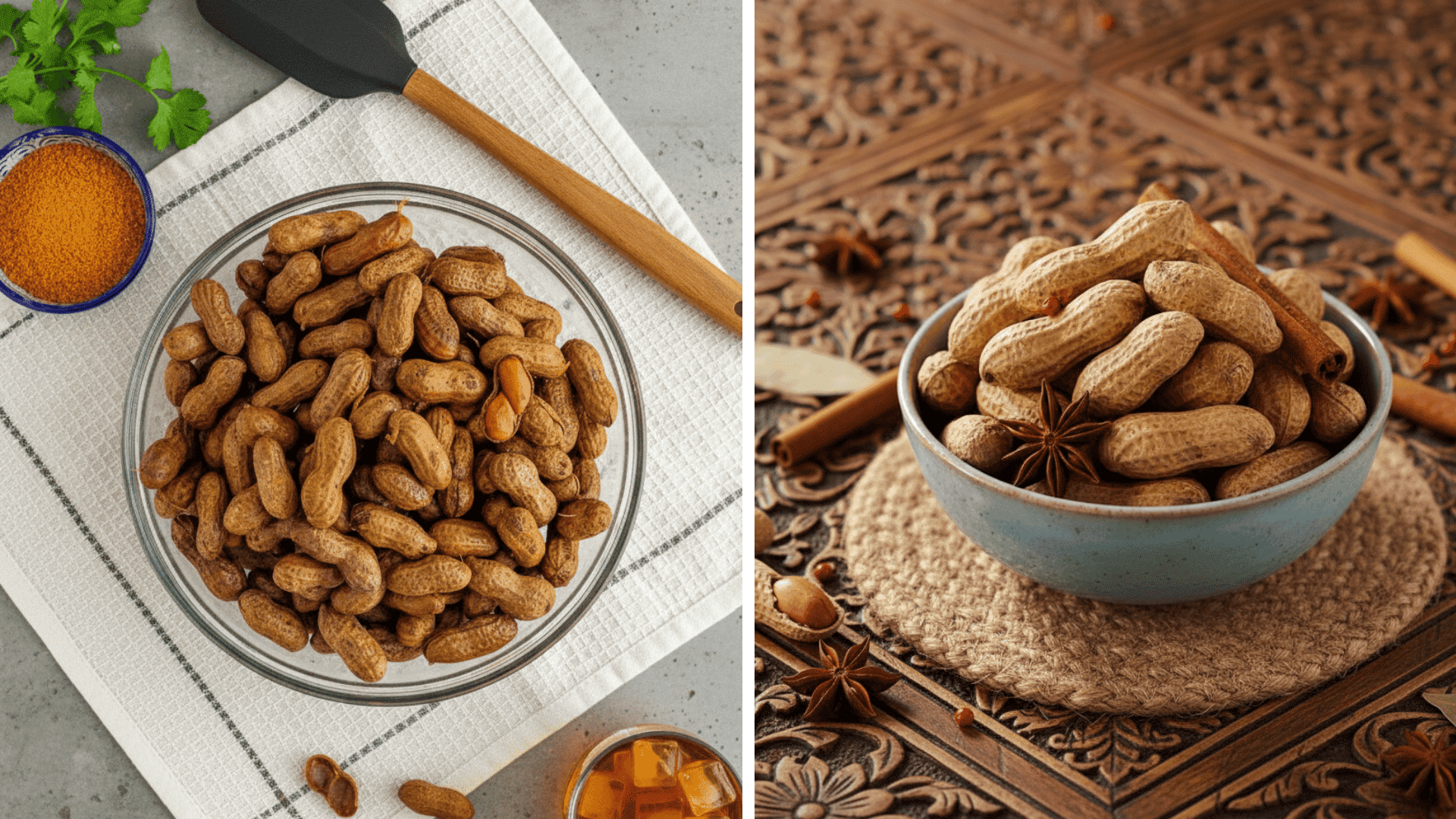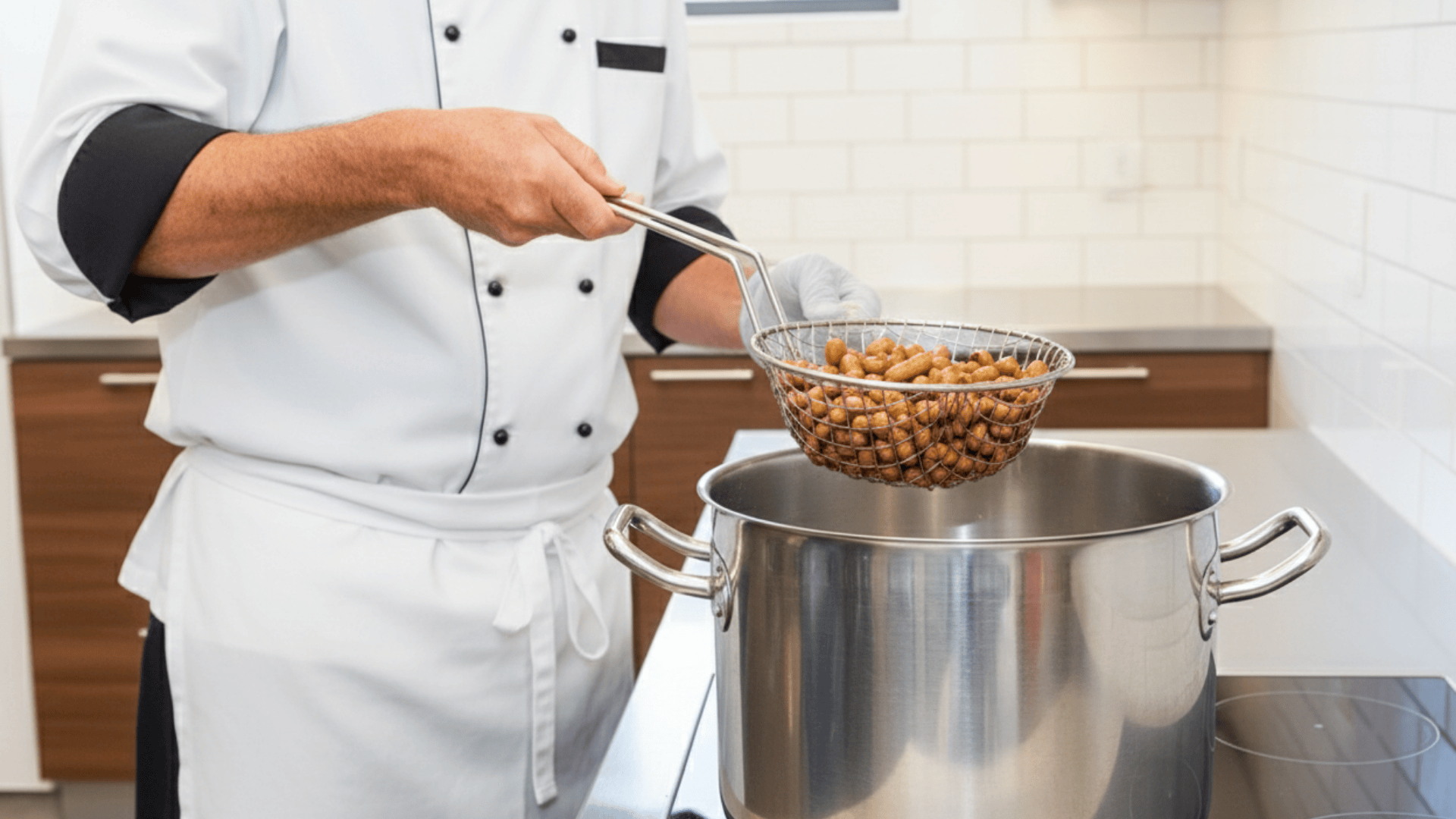When I first heard about boiled peanuts, I thought they were just a salty roadside snack. But then I started wondering, are boiled peanuts healthy, or just comfort food?
It turns out they have more to offer than most people realize. Boiled peanuts are soft, tasty, and rich in nutrients, including protein, fiber, and antioxidants.
In fact, boiling them can even make certain vitamins and minerals more easily absorbed by your body. Of course, like any snack, they can lose their shine if you load them up with too much salt.
In this post, I will break down the health benefits, possible drawbacks, and explain why so many people enjoy them. By the end, you’ll know if they belong in your diet.
What are Boiled Peanuts: Origins & Basics
Boiled peanuts are a simple yet beloved snack made by simmering fresh or “green” peanuts in salted water for hours.
These semi-mature peanuts, still in their shells, turn into soft, tender legumes with a unique, almost bean-like texture that’s completely different from their crunchy roasted cousins.
Unlike the dry snap of roasted peanuts, boiled ones are moist and savory, soaking up all that salty flavor.
They’re a cultural staple across the Southern United States, where roadside stands are everywhere, and they’re equally popular in parts of Asia and Africa. Each region adds its own delicious twist.
If you’ve never tried them, think of peanuts as a comfort food. Warm, satisfying, and surprisingly addictive.
Nutritional Profile: What’s Inside Boiled Peanuts
| Component | Amount (per 100g) |
|---|---|
| Calories | 90–120 kcal |
| Protein | 4–6 g |
| Fat | 6–7 g (mostly mono & polyunsaturated) |
| Carbohydrates | 6–8 g |
| Fiber | 2–3 g |
Boiled peanuts pack a surprising nutritional punch. While they share many benefits with their roasted counterparts, the boiling process creates some unique differences in their nutritional profile.
1. Macronutrients (per 100g serving)
Boiled peanuts contain approximately 90-120 calories, with lower values than roasted varieties due to higher water content.
They provide about 4-6g of protein, 6-7g of fat (mostly heart-healthy mono and polyunsaturated), and 6-8g of carbohydrates with roughly 2-3g of fiber.
The boiling process dilutes nutrient concentrations while keeping the core nutritional benefits intact.
2. Micronutrients & Bioactive Compounds
Boiled peanuts deliver impressive vitamins and minerals that support overall health. They’re rich in B vitamins, particularly niacin for energy metabolism, plus essential minerals like magnesium, phosphorus, potassium, and zinc.
What makes them special is their high antioxidant content. Boiled peanuts contain more polyphenols and flavonoids than raw or roasted versions, giving them stronger protective properties.
Research suggests the boiling process may alter allergenic proteins, potentially reducing their allergenicity compared to roasted peanuts.
3. How Boiling Affects Nutrition?
The boiling process creates interesting nutritional changes. Here’s what happens:
- Water-soluble vitamins and some minerals leach into cooking water during boiling.
- Antioxidants from shells transfer into the nuts, boosting beneficial compounds.
- Overall nutrient density decreases due to water absorption, but antioxidant activity increases significantly compared to raw or roasted peanuts.
These trade-offs mean boiled peanuts offer different benefits than their raw or roasted cousins, particularly when it comes to antioxidant protection.
Calories in Boiled Peanuts: What to Expect
Boiled peanuts are surprisingly lower in calories than their roasted counterparts, mainly due to their high water content. Understanding these differences helps you choose appropriate portion sizes for your diet.
| Serving Size | Boiled Peanuts | Raw Peanuts | Roasted Peanuts |
|---|---|---|---|
| Per 100g | 90-120 calories | 567 calories | 585-600 calories |
| Per cup (146g) | 130-175 calories | 828 calories | 854-876 calories |
| Per ounce (28g) | 25-34 calories | 159 calories | 164-168 calories |
Factors Affecting Calorie Content
Several factors influence the final calorie content of boiled peanuts. The cooking process significantly impacts their nutritional density.
- Water absorption: Boiled peanuts absorb significant water during cooking, which dilutes calorie density
- Salt content: Added salt doesn’t increase calories, but affects sodium levels
- Cooking time: Longer boiling increases water absorption, further reducing calories per gram
The dramatic calorie difference makes boiled peanuts a lighter snack option. While you get fewer calories per serving, you also benefit from increased satiety due to the moisture content, helping you feel fuller with less.
Health Benefits of Boiled Peanuts

Boiled peanuts offer more than just a tasty snack. Their unique preparation method unlocks several health advantages that make them a nutritious addition to your diet.
- Lean Protein for Muscle Support: Boiled peanuts provide easily digestible protein that helps build and repair muscle tissue.
- Digestive Health Support: High fiber content promotes gut motility, supports healthy digestion, and keeps you feeling satisfied longer.
- Antioxidant Powerhouse: Rich in flavonoids, polyphenols, and resveratrol that fight inflammation and protect cells from damage.
- Heart-Friendly Nutrition: Healthy fats combined with magnesium and potassium support cardiovascular function and blood pressure regulation.
- Weight Management Aid: The protein and fiber combination increases satiety, helping control appetite and potentially reducing allergic reactions in some individuals.
These benefits make boiled peanuts a smart choice for a nutritious, wellness-supporting snack. The combination of protein, fiber, and beneficial compounds makes them a practical option for healthier snacking
Potential Drawbacks & Things to Watch Out For
While boiled peanuts offer numerous health benefits, there are some considerations to keep in mind. Being aware of these factors helps you enjoy them safely and in moderation.
- High Sodium Content: Many boiled peanuts are prepared in salty brine, which can significantly increase your daily sodium intake.
- Calorie Awareness: Though healthier than many fried snacks, boiled peanuts are still calorie-dense and require mindful portion control.
- Nutrient Loss: Water-soluble vitamins and minerals can leach into the cooking water during the boiling process.
- Allergy Concerns: Peanuts remain a major food allergen, and boiling may reduce but not eliminate allergenic proteins for sensitive individuals.
- Spoilage Risk: Higher moisture content makes boiled peanuts more prone to spoilage and requires proper refrigeration for safe storage.
These drawbacks are manageable with simple precautions. Store boiled peanuts properly, watch your portions, and choose low-sodium options when available to maximize benefits while minimizing risks.
How to Choose or Prepare Healthier Boiled Peanuts?
Making smarter choices when preparing or buying boiled peanuts can help you maximize their nutritional benefits while minimizing potential drawbacks.
Cooking Tips to Preserve Nutrients & Reduce Negatives
Keep your homemade boiled peanuts as nutritious as possible with these simple adjustments:
- Use less salt or a lighter brine to control sodium levels without sacrificing flavor.
- Opt for shorter cooking times that still achieve the desired softness to minimize nutrient loss.
- Boil peanuts with their shells or skins intact to preserve antioxidants that might otherwise be lost.
Serving & Portion Strategies
Enjoying boiled peanuts in the right amounts makes all the difference for balanced nutrition:
- Treat them as a snack rather than a main meal replacement, keeping portions moderate.
- Pair them with fresh vegetables or produce to balance out the sodium content and add more nutrients.
- Skip heavy sauces, butter, or high-fat dips that can quickly turn a healthy snack into a calorie-heavy indulgence.
With these practical tips, you can enjoy boiled peanuts as a healthier snack option. Small adjustments in preparation and portioning make a big difference in getting the most nutritional value from this traditional treat.
Cultural & Regional Variations & Recipes

Boiled peanuts take on unique flavors across different cultures, from the Southern U.S. tradition of salty and Cajun-spiced versions to Asian preparations featuring soy sauce and aromatic herbs.
These regional twists can significantly alter the nutritional profile, with added sugars, extra salt, or oils changing the calorie and sodium content of this beloved snack.
Southern-Style Cajun Boiled Peanuts
This classic Southern recipe brings bold, spicy flavor to traditional boiled peanuts. Follow these simple steps to create an authentic taste of the South:
- Step 1: Rinse 2 pounds of raw peanuts in shells and place them in a large pot.
- Step 2: Add water to cover peanuts, then stir in 1/4 cup salt, 3 tablespoons Cajun seasoning, and 2 bay leaves.
- Step 3: Bring to a boil, then reduce the heat and simmer for 3-4 hours until the peanuts reach the desired tenderness.
- Step 4: Drain and let cool slightly before serving warm.
The spice blend adds minimal calories but significantly increases sodium content. Serve as a game-day snack or outdoor gathering treat that captures authentic Southern comfort.
Asian Soy-Herb Boiled Peanuts
Popular in Chinese and Taiwanese cuisine, this savory version infuses peanuts with umami-rich flavors. Here’s how to prepare this aromatic Asian-inspired snack:
- Step 1: Place 2 pounds of raw peanuts in a pot with enough water to cover them completely.
- Step 2: Add 1/2 cup soy sauce, 3 star anise, 4 slices of fresh ginger, and 2 tablespoons sugar.
- Step 3: Bring to a boil, reduce the heat, and simmer gently for 2-3 hours until soft.
- Step 4: Let peanuts soak in the cooking liquid for extra flavor before draining and serving.
The soy sauce adds extra sodium, and the sugar contributes additional calories, but the aromatic herbs provide antioxidants. This variation pairs perfectly with rice dishes or as a flavorful appetizer.
What People Say About Boiled Peanuts?
Boiled peanuts often spark lively conversations, and most of the feedback is surprisingly positive.
On forums like Reddit and Quora, people discuss how much they enjoy the soft texture and unique, salty flavor. Many say they’re a snack that reminds them of family gatherings, road trips, or festivals in the South.
Health-conscious eaters also chime in, pointing out that boiled peanuts fit well into diets because they’re filling, protein-rich, and lower in fat than some roasted versions.
Some even share that they’ve used them as a healthier alternative to chips or processed snacks.
One person said, “They taste amazing when cooked in salted water with lemon halves, garlic, and a few dried chilies. I never understood why some people find the flavor polarizing, they’re really quite similar to roasted peanuts, just with a soft texture instead of a crunch. If you enjoy roasted peanuts, chances are you’ll enjoy them boiled too.“
You can join and participate in the discussion here at Reddit.
Wrapping Up
I’ve always loved boiled peanuts for their unique texture and taste, but learning about their impressive nutritional benefits makes me appreciate them even more.
From their high antioxidant content to potential reduced allergenicity, they’re more than just a tasty snack. The lower calorie count compared to roasted peanuts is a bonus for anyone watching their intake.
Just remember to watch the sodium and store it properly to avoid spoilage.
Have you tried boiled peanuts before? What’s your favorite way to prepare or enjoy them? Share your thoughts and recipes in the comments below!





